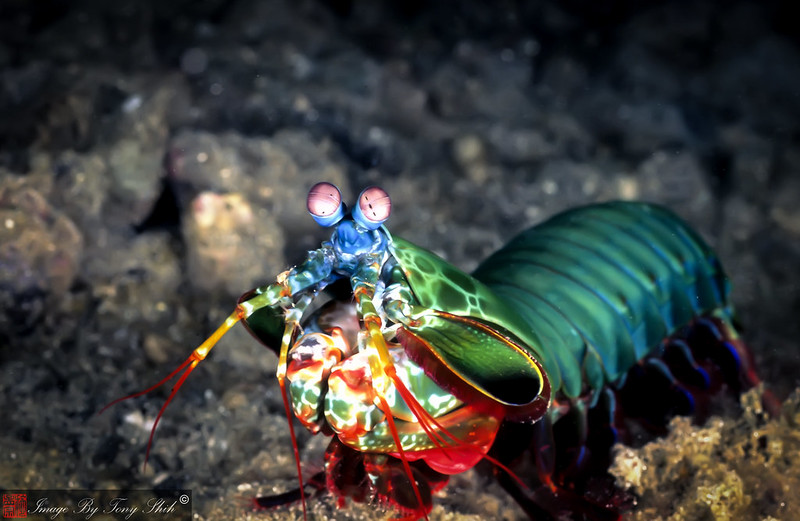Deep beneath the Earth’s surface lie hidden worlds shrouded in perpetual darkness. These shadowy caves harbor some of the most mysterious and fascinating creatures on the planet. Adapted to thrive without light, these organisms exhibit extraordinary features—from eyeless vision to translucent bodies—that challenge our understanding of life. Exploring these subterranean realms reveals not just the resilience of nature but also its boundless capacity for adaptation. Join us as we delve into the depths to uncover 16 enigmatic creatures that dwell in the world’s darkest caves.
Olm (Proteus anguinus)
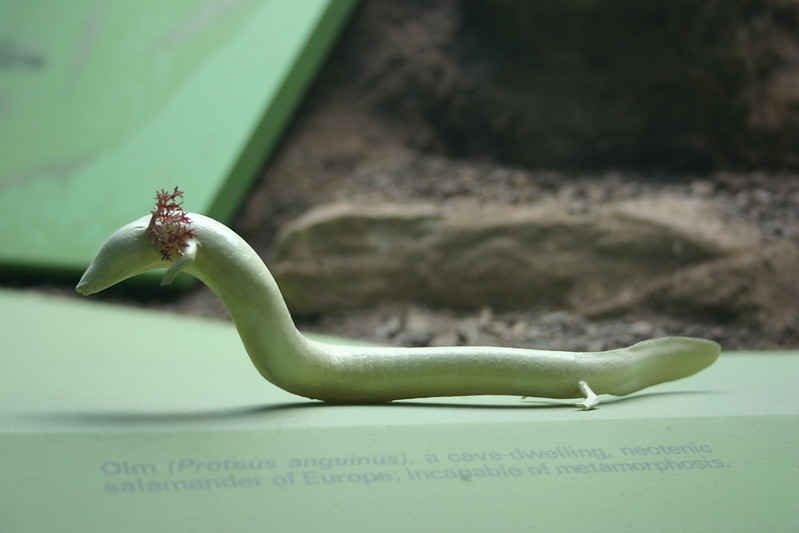
The olm, often referred to as the “human fish” for its pale skin, is a blind, cave-dwelling amphibian native to the underground waters of Europe. It has lived in complete darkness for so long that it has lost its eyesight entirely. However, it compensates with heightened senses of smell and hearing. Its elongated, snake-like body can reach up to 12 inches, making it a formidable predator in its environment. Interestingly, olms can go years without eating, surviving on their body’s fat reserves. Their ability to thrive in such an extreme environment has fascinated biologists for centuries.
Texas Blind Salamander (Eurycea rathbuni)
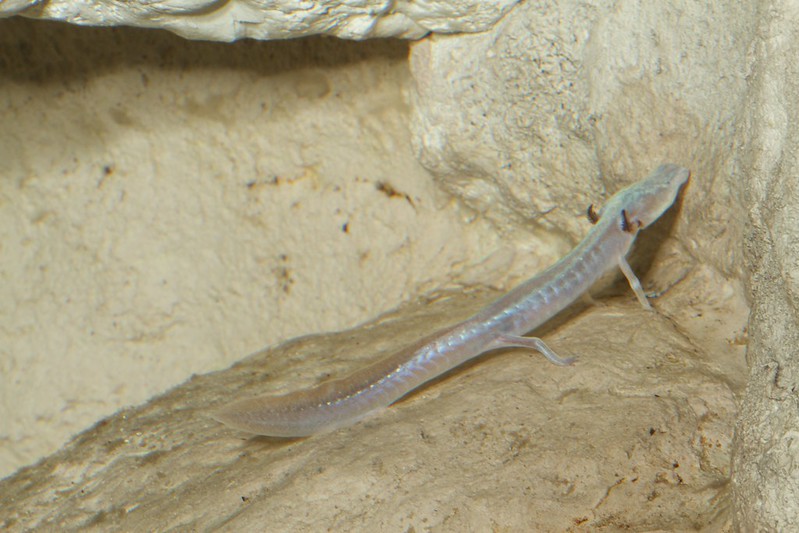
Living in the dark, underground aquifers of Texas, the Texas blind salamander is a master of adaptation. It lacks pigmentation, giving it a ghostly white appearance, and is completely blind, relying on other senses for survival. Its elongated limbs help it navigate the pitch-black waters, where it hunts small invertebrates. Because food is scarce, the salamander has evolved to have a very slow metabolism, requiring minimal energy. This amphibian is an excellent example of how life finds a way, even in the darkest places on Earth. Its resilience in the face of such harsh conditions is truly remarkable.
Cavefish (Amblyopsidae)

Cavefish are found in the subterranean lakes and rivers of North America, Asia, and Europe. Over generations, these fish have adapted to the total darkness by losing their vision entirely. Instead, they use highly sensitive sensory organs on their body to detect minute changes in water pressure, helping them locate prey. Their lack of pigmentation results in a translucent or pale pink appearance. In the nutrient-poor environments of caves, cavefish are opportunistic feeders, devouring anything from algae to small insects. Despite their ghostly appearance, they are hardy survivors.
Cave Cricket (Ceuthophilus spp.)
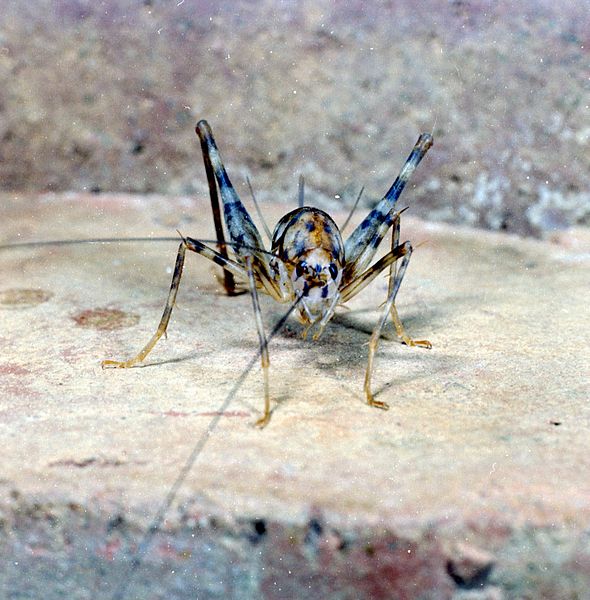
Cave crickets are strange, long-legged insects that haunt the damp, dark caves across the world. With their oversized antennae, these crickets can detect even the faintest movements in the dark. They lack pigmentation, giving them a ghostly appearance, and often huddle together in large groups to stay warm. Unlike surface crickets, they rarely chirp, relying on vibrations to communicate instead. Their diet consists of fungi, decaying plant matter, and even bat guano, making them essential for the cave’s delicate ecosystem. Cave crickets have a slow reproductive rate, a survival adaptation to their harsh environment.
Kaua’i Cave Wolf Spider (Adelocosa anops)
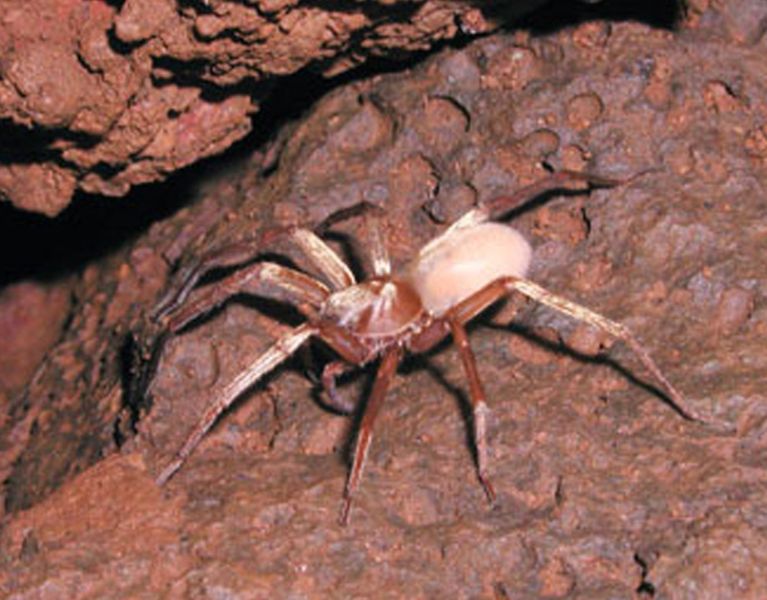
Native to Hawaii’s dark and hidden caves, the Kaua’i Cave wolf spider is a rare and enigmatic species. It is unique among spiders in that it has no eyes at all, relying solely on touch and vibrations to hunt prey. This spider is an active predator, known to feed on cave crickets and other small invertebrates. Its striking, pale appearance is due to the lack of sunlight in its subterranean habitat. This species is highly specialized and only found in a few isolated caves on the island. Due to its rarity, it has garnered significant interest from conservationists.
Cave Beetle (Leptodirus hochenwartii)
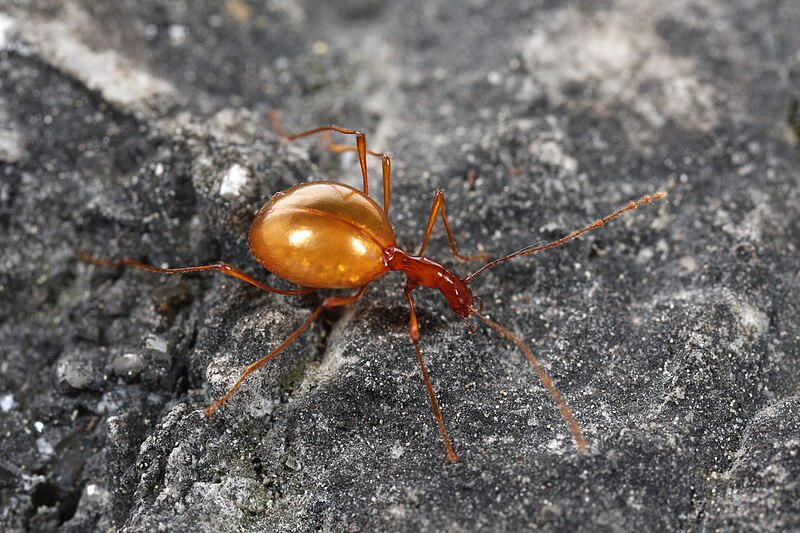
Found in Europe’s deep cave systems, the cave beetle is a small, blind, and highly specialized insect. It has adapted to its pitch-black environment by developing elongated antennae to sense its surroundings. The beetle’s waxy, light-colored exoskeleton provides protection from the cave’s damp conditions. Unlike its surface-dwelling relatives, it has a slow metabolism, enabling it to survive long periods without food. This beetle plays a crucial role in the cave’s ecosystem by feeding on fungi and decomposing organic matter. Its life, hidden away from the sun, is a testament to evolution’s power.
Mexican Tetra (Astyanax mexicanus)
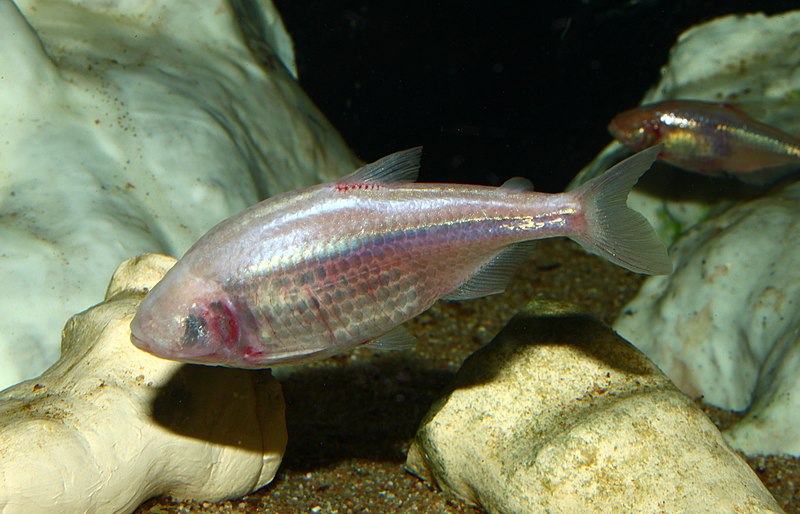
The Mexican tetra, or blind cavefish, is one of the most well-known species of cave-dwellers. While surface populations of this species have functional eyes, the cave-dwelling varieties are entirely blind. Over generations, their eyes have regressed into vestigial structures, while their other senses have sharpened. They navigate the dark cave rivers through the use of their lateral line system, which detects changes in water currents. These fish are usually pale or colorless, blending seamlessly into their lightless surroundings. Their ability to survive in both light and dark environments makes them a fascinating subject for researchers.
Cave Salamander (Eurycea lucifuga)
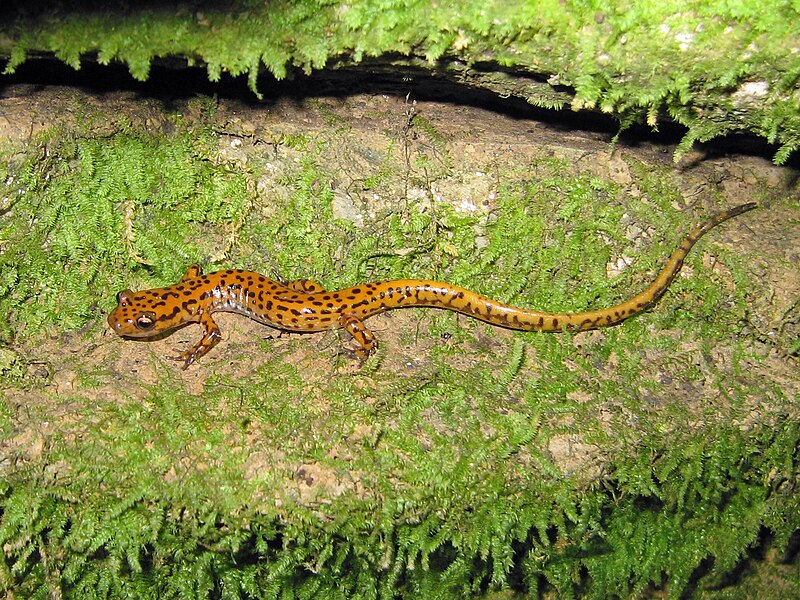
Native to the limestone caves of the southeastern United States, the cave salamander is known for its slender body and bright orange or red coloration. Though it lives in dark environments, it has retained its eyesight, unlike many other cave creatures. The salamander feeds on insects and small invertebrates, using its keen sense of smell to track prey in the shadows. It is highly adaptable, capable of surviving both in total darkness and in dimly lit areas near cave entrances. The cave salamander’s resilience and adaptability make it a common, yet captivating, denizen of subterranean ecosystems.
Ghost Shrimp (Palaemonetes paludosus)
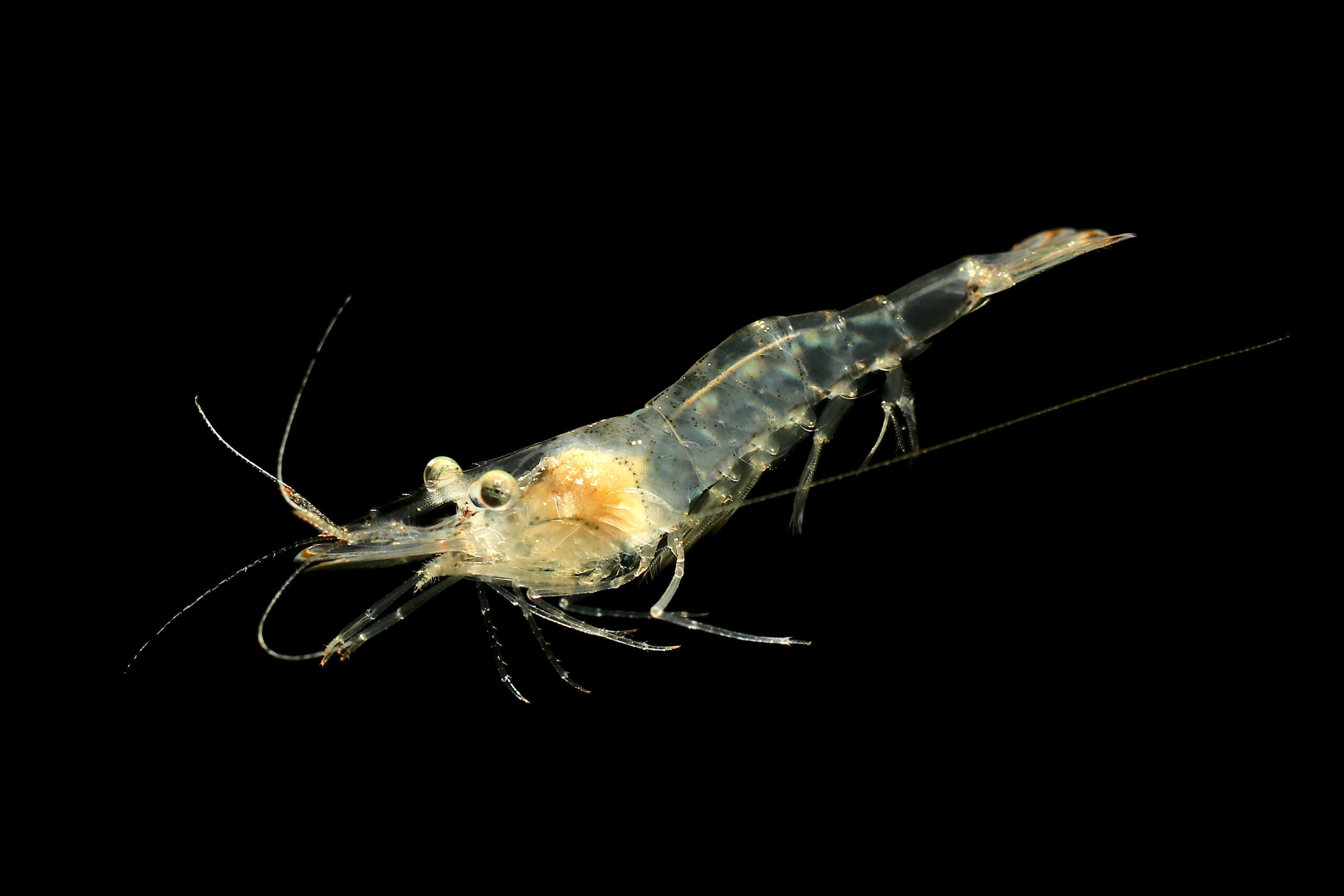
Deep in the dark waters of underground rivers and lakes, the ghost shrimp navigates its invisible world. These transparent crustaceans have adapted to their environment by developing longer antennae and heightened sensitivity to movement. Lacking the usual pigmentation, they appear almost invisible to both predators and prey. Their diet consists mainly of detritus, making them important for maintaining the balance of the cave’s ecosystem. Ghost shrimp are prolific breeders, helping them survive in nutrient-poor conditions. Their ethereal, see-through bodies make them one of the most mysterious creatures of the cave world.
Cave Harvestman (Hadenoecus subterraneus)

Known for their long, spindly legs, cave harvestmen are arachnids that haunt the caves of North America. Though they resemble spiders, they are a different kind of creature altogether. These harvestmen have evolved elongated appendages to feel their way through the cave’s tight crevices. Their pale coloration and lack of vision make them well-suited to life in total darkness. They feed on decaying organic material, playing a key role in the cave’s nutrient cycle. Despite their fragile appearance, cave harvestmen are resilient survivors of these harsh environments.
Cave Pseudoscorpion (Neobisium cavicolens)
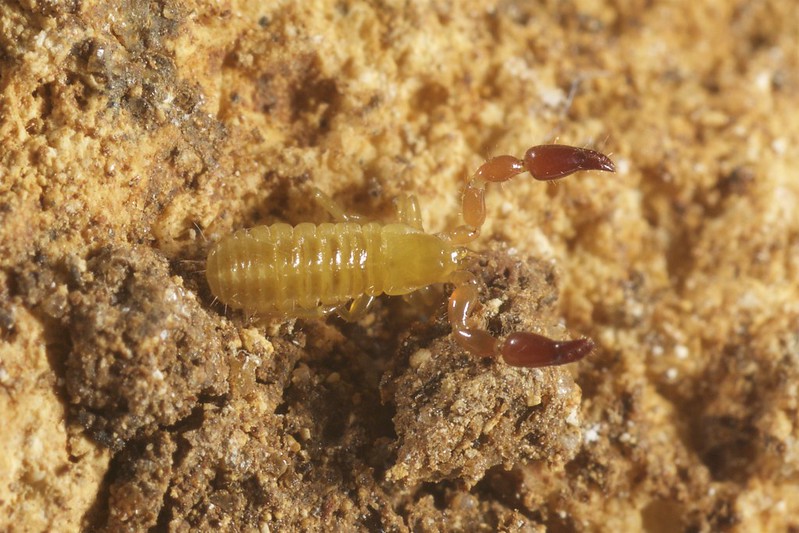
Though tiny, the cave pseudoscorpion is a fierce predator in the subterranean world. Unlike true scorpions, it has no tail or stinger but uses its pincers to capture small prey. Found in European cave systems, this species has adapted to its dark surroundings by losing its vision and relying on touch to find its next meal. The pseudoscorpion’s translucent body helps it blend into the shadows, avoiding larger predators. It feeds on mites, flies, and other invertebrates that inhabit the caves. Despite its small size, this creature plays a critical role in maintaining the cave’s delicate ecosystem.
Cave Bat (Myotis velifer)
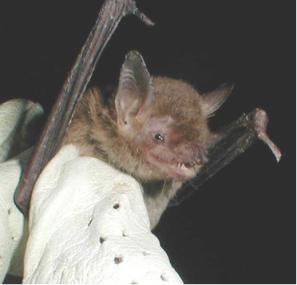
Cave bats are some of the most recognizable creatures of the underground world. Found in caves across North and Central America, these bats are highly specialized for life in darkness. While they use echolocation to navigate, their sense of hearing is equally impressive, allowing them to detect the faintest movements of their prey. They roost in large colonies, often numbering in the thousands, and feast on insects that also make their homes in the caves. Cave bats are integral to maintaining the balance of these dark ecosystems, controlling insect populations. Their mysterious and elusive nature only adds to their intrigue.
Cave Springtail (Collembola spp.)
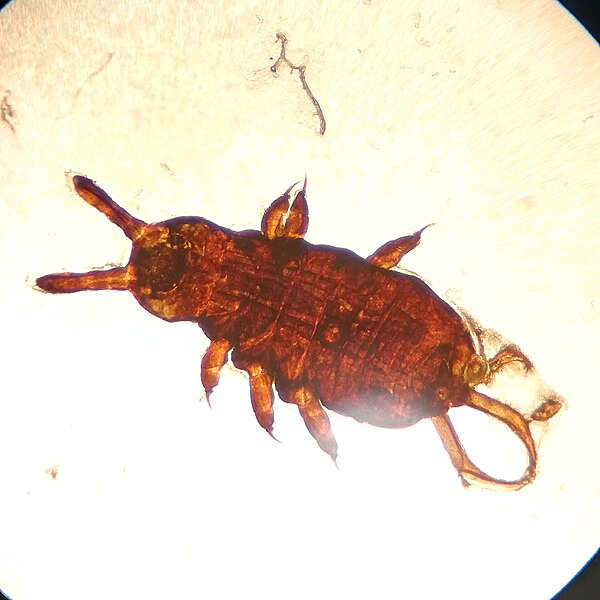
Springtails, though tiny, are an essential part of the cave ecosystem, helping to break down organic matter. These small, wingless insects thrive in the moist, nutrient-poor environments of caves around the world. Lacking pigmentation and often colorless, cave springtails blend seamlessly into their dark surroundings. They have evolved to survive on fungi, decaying plants, and detritus, making them an integral part of nutrient cycling in caves. With specialized appendages, they are excellent jumpers, using this ability to escape predators. Their role in breaking down organic matter is critical to the cave’s ecological balance.
Cave Isopod (Caecidotea cannula)
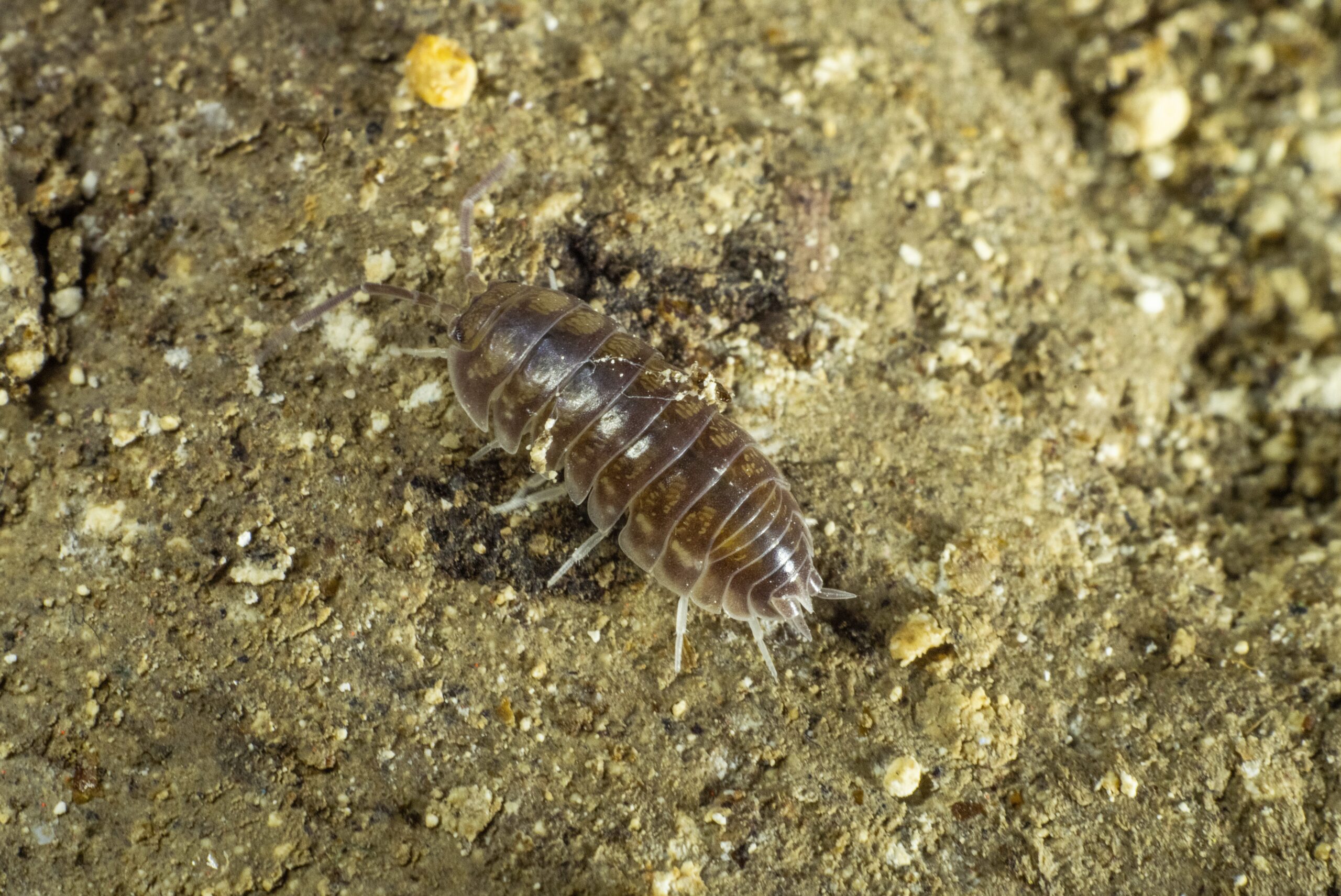
The cave isopod, a small crustacean, is perfectly suited for the dark waters of underground lakes and rivers. Found in North American cave systems, this creature has a flattened, segmented body that helps it move through tight spaces. Like many other cave dwellers, it has lost its pigmentation and eyesight over time. Instead, it uses specialized hairs to detect movement and changes in water pressure. Feeding on detritus and decaying plant matter, the cave isopod plays a vital role in cleaning up the cave’s ecosystem. Its ability to survive in such an extreme habitat showcases nature’s adaptability.
Troglobitic Snail (Zospeum tholussum)

One of the world’s most enigmatic cave creatures, the troglobitic snail, is a tiny mollusk that inhabits European caves. It is incredibly slow-moving and has adapted to the nutrient-poor cave environment by developing an extremely slow metabolism. These snails are eyeless, relying on chemical signals and touch to navigate their dark, rocky world. They feed on biofilms and decaying organic matter, helping to recycle nutrients in the cave ecosystem. The troglobitic snail’s delicate, translucent shell adds to its mysterious appearance. Despite their slow pace, these snails are critical to the balance of the cave’s ecosystem.
European Cave Spider (Meta menardi)
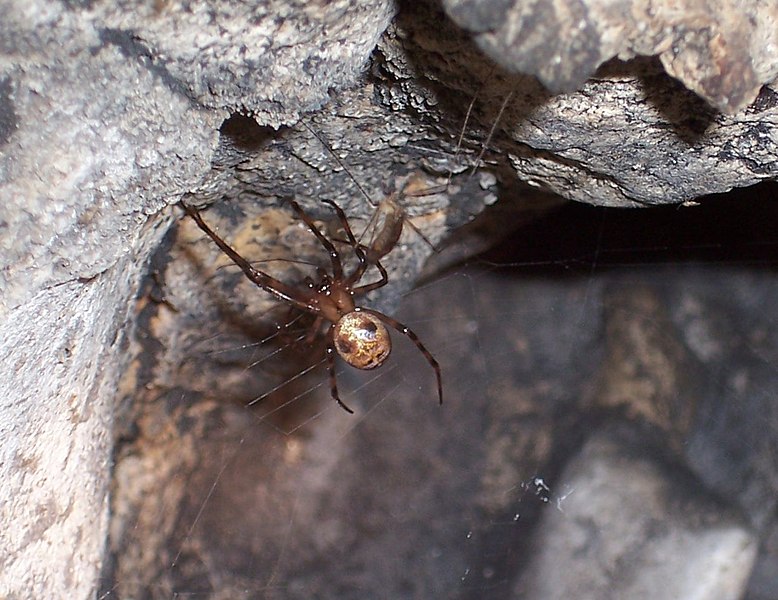
The European cave spider is a master of the dark, weaving its webs in the deep recesses of caves across Europe. Unlike many cave-dwelling species, these spiders retain their eyesight, though it is greatly reduced. Their long legs and pale, almost translucent bodies make them well-suited to navigating the cave’s uneven surfaces. They spin large, orb-shaped webs to catch insects that wander into the cave’s darkness. These spiders are slow-growing and have a long lifespan compared to their surface-dwelling relatives. Their presence helps control insect populations, maintaining balance in the cave ecosystem.
This article originally appeared on Rarest.org.
More From Rarest.Org
Throughout history, different civilizations have used a wide variety of materials and objects as currency, often reflecting their unique cultures and resources. From stones and shells to cocoa beans and metal tools, these currencies went beyond their practical value, symbolizing wealth, power, and status. Read more.
Championship games are where legends are made, but they can also be where the most unexpected outcomes unfold. Throughout sports history, we’ve witnessed shocking upsets that defied all predictions and left fans in disbelief. Read more.
Invertebrates are some of the most adaptable and resourceful creatures on Earth, developing unique survival skills to thrive in diverse environments. From complex camouflage to explosive defense mechanisms, these creatures have evolved extraordinary abilities that help them evade predators, catch prey, and survive extreme conditions. Read more.



